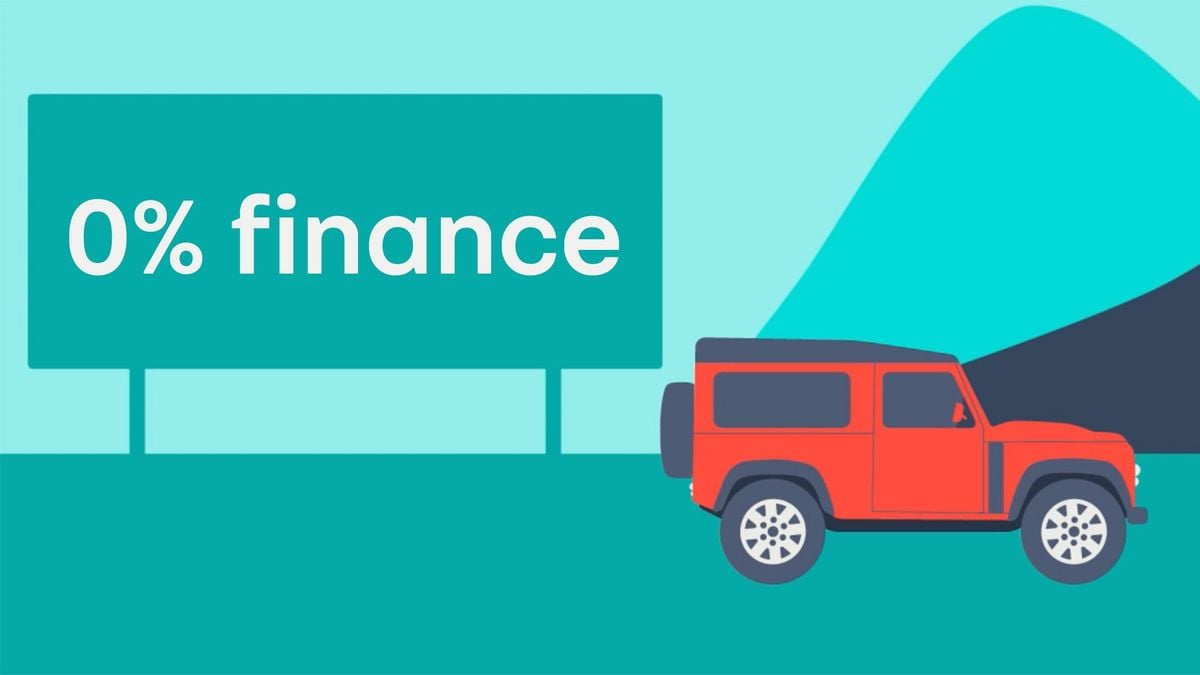

Finance
How To Qualify For Subsidized Student Loans
Published: January 19, 2024
Learn how to qualify for subsidized student loans and finance your education. Find out the requirements and guidelines for obtaining these loans.
(Many of the links in this article redirect to a specific reviewed product. Your purchase of these products through affiliate links helps to generate commission for LiveWell, at no extra cost. Learn more)
Table of Contents
- Introduction
- What are subsidized student loans?
- Eligibility requirements for subsidized student loans
- Completing the Free Application for Federal Student Aid (FAFSA)
- Demonstrating Financial Need
- Enrollment in an Eligible Program and School
- Maintaining Satisfactory Academic Progress
- Loan Limits for Subsidized Student Loans
- Interest Rates and Repayment Options
- Applying for Subsidized Student Loans
- Conclusion
Introduction
Student loans are a crucial financial tool for millions of students pursuing higher education. However, the burden of student loan debt can be overwhelming, especially for those with limited financial resources. Thankfully, there are options available to ease this burden, such as subsidized student loans.
Subsidized student loans are a type of loan where the government pays the interest on the loan while the borrower is still in school, during the grace period, and in deferment periods. This means that borrowers don’t have to worry about accruing interest during these periods, ultimately saving them money.
In this article, we will explore the key aspects of qualifying for subsidized student loans. We will discuss the eligibility requirements, the application process, and other important details that prospective borrowers need to know.
By understanding the qualifications and benefits of subsidized student loans, individuals can make informed decisions regarding their education financing options and reduce the financial burden associated with student loans.
What are subsidized student loans?
Subsidized student loans are a type of federal student loan that offers financial assistance to undergraduate students based on their financial need. Unlike unsubsidized loans, subsidized loans do not accrue interest while the borrower is enrolled in school, during the grace period, or during authorized periods of deferment. This feature makes them an attractive option for students who require financial support to pursue their education.
When a student is approved for a subsidized loan, the U.S. Department of Education pays the interest on the loan on behalf of the borrower as long as the student maintains at least half-time enrollment in an eligible program at an accredited school. This benefit provides a significant advantage, as it helps students save money by preventing the interest from accumulating during certain periods.
Unlike private loans, subsidized student loans have fixed interest rates and flexible repayment options. These loans also offer several benefits such as income-driven repayment plans, loan forgiveness programs, and deferment or forbearance options, which can be utilized in times of financial hardship. Additionally, subsidized loans may also be eligible for loan consolidation, which can simplify the repayment process and potentially lower monthly payments.
It is important to note that subsidized student loans are only available to undergraduate students and have annual and aggregate borrowing limits. The exact loan limits may vary depending on factors such as the student’s year in school and dependency status. To qualify for a subsidized loan, students must demonstrate financial need by completing the Free Application for Federal Student Aid (FAFSA), which is used to determine their eligibility for federal student financial aid programs.
In summary, subsidized student loans provide a valuable financial resource for undergraduate students in need of assistance to pursue their education. By offering interest-free loans during certain periods and flexible repayment options, subsidized loans help alleviate some of the financial burdens associated with higher education.
Eligibility requirements for subsidized student loans
While subsidized student loans offer significant benefits, not all students will qualify for this type of loan. To determine eligibility, there are several requirements that must be met. Understanding these requirements is essential for individuals considering subsidized student loans as a financial aid option for their education.
The primary eligibility requirement for subsidized student loans is demonstrating financial need. This is determined through the Free Application for Federal Student Aid (FAFSA), which assesses the student’s financial situation and determines their Expected Family Contribution (EFC). The EFC is the amount that the student and their family are expected to contribute towards their education expenses. To be eligible for subsidized loans, the student’s EFC must fall within a certain range specified by the U.S. Department of Education.
In addition to demonstrating financial need, there are other eligibility criteria that must be met:
- The student must be a U.S. citizen, a U.S. national, or an eligible non-citizen.
- The student must have a high school diploma or a recognized equivalent.
- The student must be enrolled or accepted for enrollment in an eligible degree or certificate program at an accredited institution.
- The student must maintain satisfactory academic progress as defined by their school.
- The student must not be in default on any federal student loans and must not owe a refund on any federal grant programs.
- The student must have a valid Social Security number.
It is important for students to carefully review these eligibility requirements and ensure they meet all criteria before applying for subsidized student loans. Failing to meet any of the requirements may result in ineligibility for this particular type of loan.
Students who do not meet the eligibility requirements for subsidized student loans may still have other financial aid options, such as unsubsidized student loans, grants, scholarships, or work-study programs. Exploring all available options can help students make informed decisions about how to finance their education and minimize their overall student loan debt.
Completing the Free Application for Federal Student Aid (FAFSA)
The Free Application for Federal Student Aid (FAFSA) is a crucial step in determining an individual’s eligibility for subsidized student loans and other forms of federal financial aid. Completing the FAFSA accurately and on time is essential for students seeking financial assistance to fund their education.
The FAFSA is available online and is free to complete. It collects information about the student’s and their family’s financial situation, including income, assets, household size, and number of family members in college. This information is used to calculate the Expected Family Contribution (EFC), which determines the amount of financial aid the student is eligible to receive.
To complete the FAFSA, students will need the following information:
- Social Security number
- Driver’s license number (if applicable)
- Federal income tax returns, W-2s, and other records of income
- Information on untaxed income, such as child support or veterans benefits
- Records of assets such as bank statements and investment information
- A Federal Student Aid (FSA) ID, which serves as an electronic signature
It is important to gather these documents and have them readily available before starting the FAFSA to ensure accurate and efficient completion of the application.
Once the FAFSA is submitted, it will be processed by the U.S. Department of Education, and the student will receive a Student Aid Report (SAR) via email or by regular mail. The SAR summarizes the information provided on the FAFSA and includes the student’s EFC. It is important to review the SAR carefully for any errors and make corrections if necessary.
The FAFSA has specific deadlines for submission, and it is important to meet these deadlines to ensure maximum eligibility for financial aid. In general, the FAFSA becomes available on October 1st for the upcoming academic year, and the deadline for submission varies depending on state and school requirements. It is recommended to submit the FAFSA as early as possible to maximize the potential for receiving financial aid.
Completing the FAFSA accurately and on time is crucial for students seeking subsidized student loans and other forms of federal financial aid. By providing the necessary financial information and reviewing the SAR for accuracy, students can take advantage of the financial aid options available to them and ease the burden of financing their education.
Demonstrating Financial Need
Demonstrating financial need is a key requirement for eligibility for subsidized student loans. The concept of financial need is determined by the Free Application for Federal Student Aid (FAFSA), which takes into account various factors to assess a student’s ability to pay for their education expenses.
When completing the FAFSA, students and their families provide information about their income, assets, and household size. This data is used to calculate the student’s Expected Family Contribution (EFC), which reflects the amount the government believes the student and their family can reasonably contribute towards education costs. The EFC is an important determinant of financial need.
The financial need calculation is relatively straightforward. The formula used is as follows:
Cost of Attendance (COA) – Expected Family Contribution (EFC) = Financial Need
The Cost of Attendance (COA) refers to the total estimated cost of attending a specific institution for an academic year. It includes tuition, fees, books, housing, meals, transportation, and other related expenses.
By subtracting the Expected Family Contribution (EFC) from the Cost of Attendance (COA), the FAFSA determines the financial need of the student. If the resulting amount is positive, it suggests that the student has demonstrated financial need and may be eligible for subsidized student loans or other forms of need-based financial assistance.
It’s important to note that the EFC is not the amount that a family necessarily has to pay out of pocket. Instead, it is used as a measure of need to determine eligibility for need-based aid. The actual amount a family pays may vary depending on financial aid packages, scholarships, and other factors.
If a student’s financial situation changes after filing the FAFSA, they can contact the financial aid office at their institution to discuss their circumstances. Certain situations, such as a loss of income or a change in family size, may warrant a reevaluation of financial need.
In summary, demonstrating financial need is a crucial component of qualifying for subsidized student loans. The FAFSA calculates financial need by comparing the Cost of Attendance (COA) to the Expected Family Contribution (EFC). By accurately reporting financial information on the FAFSA and keeping the financial aid office informed of any changes, students can ensure that their financial need is accurately assessed, increasing their chances of receiving subsidized student loans to help fund their education.
Enrollment in an Eligible Program and School
In order to qualify for subsidized student loans, it is crucial to be enrolled in an eligible program and school. The U.S. Department of Education sets guidelines to ensure that federal financial aid is directed towards accredited institutions and approved programs that meet certain standards.
First and foremost, the school must be approved by the U.S. Department of Education to participate in Title IV federal student aid programs. This includes most colleges, universities, vocational schools, and trade schools in the United States. It is important to verify the school’s accreditation status before applying for student loans.
Not only must the school be eligible, but the program of study in which the student is enrolled must also qualify for federal financial aid. Most degree-granting programs at eligible institutions are eligible for subsidized student loans. However, certain certificate programs or vocational courses may have additional requirements to be eligible for federal aid.
When researching programs and schools, it is important to consider their accreditation status and eligibility for federal financial aid. Accreditation ensures that the institution meets certain quality standards and may impact the transferability of credits and the recognition of degrees.
Additionally, the enrolled program must meet the minimum credit hour requirement to be eligible for federal financial aid, including subsidized student loans. Typically, undergraduate students must be enrolled at least half-time, which is typically defined as a minimum requirement of six credit hours per semester or the equivalent.
Students should also be aware of any program-specific requirements or limitations that may affect their eligibility for subsidized student loans. Some programs and schools may have specific criteria, such as maintaining a minimum GPA or completing certain prerequisite courses, to maintain eligibility for federal aid.
It is crucial to review and understand the eligibility requirements for both the school and program of study before pursuing subsidized student loans. Consulting with the school’s financial aid office can provide further guidance and ensure that the chosen program and school align with the requirements for federal financial aid.
In summary, enrollment in an eligible program and school is a key requirement for obtaining subsidized student loans. Ensuring that the institution is accredited, the program is eligible for federal financial aid, and the student meets the minimum credit hour requirements are essential steps in qualifying for subsidized student loans to finance education expenses.
Maintaining Satisfactory Academic Progress
In order to retain eligibility for subsidized student loans, students must maintain satisfactory academic progress (SAP). This requirement ensures that students are making progress towards their educational goals and using federal financial aid responsibly.
Satisfactory academic progress is typically measured based on three main components:
- Grade Point Average (GPA): Students must maintain a minimum GPA as determined by their school. This requirement varies depending on the institution and the specific program of study. It is important for students to understand the GPA threshold required to remain eligible for federal financial aid, including subsidized student loans.
- Course Completion: Students must successfully complete a certain percentage of the courses they attempt. Generally, this requires maintaining a passing grade in the majority of coursework. Failure to complete a certain percentage of courses can result in a loss of eligibility for financial aid.
- Timely Progress towards Degree: Students must make progress towards completing their degree within a defined timeframe. This means staying on track to complete the program of study within the designated length of time, which is typically measured in terms of credits earned or academic years completed.
It is important for students to familiarize themselves with their school’s specific SAP policy, as each institution may have its own set of guidelines and requirements. Academic progress is typically evaluated at the end of each academic year or semester.
If a student fails to meet the SAP requirements, they may become ineligible for further disbursement of federal financial aid, including subsidized student loans. However, there may be opportunities to regain eligibility through an appeal process or by taking steps to improve academic performance.
It is essential for students to take their academic progress seriously and seek support when needed. Utilizing resources such as tutoring, academic advising, and study skills workshops can help students maintain satisfactory academic progress and stay on track towards their educational goals.
In summary, maintaining satisfactory academic progress is a requirement for continued eligibility for subsidized student loans. By meeting GPA requirements, completing courses successfully, and progressing toward degree completion, students can ensure that they remain eligible to receive federal financial aid and continue to finance their education.
Loan Limits for Subsidized Student Loans
When considering subsidized student loans, it is important to understand the loan limits set by the U.S. Department of Education. The loan limits determine the maximum amount that students can borrow in subsidized loans to finance their education expenses.
The loan limits for subsidized student loans are based on several factors, including the student’s grade level and dependency status. Generally, undergraduate students have lower loan limits compared to graduate or professional students.
For dependent undergraduate students, the annual loan limits for subsidized loans range from $3,500 to $5,500, depending on their year of study. The aggregate loan limit, which represents the total amount a student can borrow over their undergraduate career, is set at $23,000.
For independent undergraduate students or dependent students whose parents are unable to borrow a Direct PLUS Loan, the annual loan limits for subsidized loans are slightly higher. They range from $3,500 to $7,500, again depending on the student’s year of study. The aggregate loan limit for independent undergraduate students is set at $23,000, which is the same as for dependent students.
It’s worth noting that the loan limits may change over time due to federal regulations or adjustments for inflation. Therefore, it is important for students to consult the current loan limits specified by the U.S. Department of Education.
It is important to remember that subsidized student loans are just one part of the financial aid package that students may receive. Students may also receive unsubsidized loans or other forms of financial aid to help cover the cost of education beyond the subsidized loan limits.
It’s crucial for students to only borrow what is necessary to cover their educational expenses. Taking on excessive loan debt can lead to financial strain after graduation. Students should carefully consider their budget, other financial resources, and potential future earnings to make informed decisions about borrowing.
In summary, the loan limits for subsidized student loans help regulate the amount of federal aid students can receive for their undergraduate education. Understanding these limits is key to effectively planning how to finance education costs and minimize student loan debt.
Interest Rates and Repayment Options
Understanding the interest rates and repayment options associated with subsidized student loans is essential for borrowers. These factors play a significant role in the overall cost of the loan and the timeline for repayment.
Interest rates for subsidized student loans are set by the federal government and are typically lower compared to other types of loans. The interest rate for undergraduate subsidized loans disbursed on or after July 1, 2021, is fixed at 3.73%. It’s important to note that interest rates may change annually, so borrowers should check the current rates when considering a loan.
One of the unique benefits of subsidized student loans is that the government pays the interest on the loan while the borrower is enrolled in school at least half-time, during the six-month grace period after leaving school, and during authorized periods of deferment. This means that the interest does not accrue during these periods, effectively reducing the overall cost of borrowing.
Repayment of subsidized student loans typically begins six months after the borrower graduates, leaves school, or drops below half-time enrollment. However, borrowers have several repayment options to choose from:
- Standard Repayment: This is the default repayment plan, where borrowers make fixed monthly payments over a 10-year period. This plan usually results in higher monthly payments but allows borrowers to pay off the loan faster and minimize the total interest paid.
- Income-Driven Repayment Plans: These plans base the monthly loan payments on the borrower’s income and family size. The most common income-driven repayment plans are Income-Based Repayment (IBR), Pay As You Earn (PAYE), and Revised Pay As You Earn (REPAYE). These plans can potentially lower monthly payments, but the loan term may be extended and more interest may accrue over time.
- Extended Repayment: This plan extends the repayment term beyond the standard 10-year period, resulting in lower monthly payments, but more interest paid over the life of the loan.
- Graduated Repayment: This plan starts with lower payments that gradually increase over time. It may be beneficial for borrowers expecting their income to increase steadily in the future.
Each repayment plan has advantages and considerations, and borrowers should evaluate their financial situation and future prospects to choose the most suitable plan.
Borrowers can also explore options for loan forgiveness or cancellation. For example, Public Service Loan Forgiveness (PSLF) is available to borrowers working in qualifying public service jobs who make qualifying payments for a specified period of time.
In summary, subsidized student loans offer favorable interest rates and flexible repayment options. Choosing the right repayment plan and exploring options for loan forgiveness can help borrowers manage their debt and effectively navigate their path towards becoming loan-free.
Applying for Subsidized Student Loans
Applying for subsidized student loans involves a straightforward process that begins with completing the necessary documentation to demonstrate eligibility and need. Here is a step-by-step guide to help prospective borrowers navigate the application process:
- Complete the FAFSA: The first step is to complete the Free Application for Federal Student Aid (FAFSA). This comprehensive form collects information about the student’s and their family’s financial situation. Be sure to provide accurate and up-to-date information to ensure an accurate assessment of financial need.
- Review the Student Aid Report (SAR): After submitting the FAFSA, you will receive a Student Aid Report (SAR) that summarizes the information provided and includes your Expected Family Contribution (EFC). Review the SAR carefully for any errors and make corrections if necessary.
- Receive the Financial Aid Award Letter: Once the school receives the FAFSA data and determines your eligibility for financial aid, they will send you a financial aid award letter. This letter outlines the types and amounts of aid you are eligible to receive, including any subsidized student loans.
- Accept or Decline the Loan: Carefully review the financial aid award letter, including the details of the subsidized student loan offer. Determine the amount of the loan you wish to accept, acknowledging that you have the option to decline any or all of the offered loan amount.
- Complete Entrance Counseling: Before receiving the loan funds, first-time borrowers must complete entrance counseling. This counseling session provides important information about your rights and responsibilities as a borrower, loan terms, and repayment options.
- Sign the Master Promissory Note (MPN): To finalize the loan process, borrowers must sign a Master Promissory Note (MPN). This legally binding document outlines the terms and conditions of the loan, including the borrower’s promise to repay the loan and the repayment details.
- Receive Disbursement: After completing the above steps, the school will disburse the loan funds. These funds are typically sent directly to the school to cover tuition, fees, and other approved educational expenses. Any remaining funds may be provided to you for additional educational expenses.
It is important to stay organized throughout the application process and promptly respond to any requests for additional information from the school’s financial aid office. Regularly monitor communication channels, including email and the school’s online portal, to stay updated on the status of your financial aid application.
Remember, borrowing should be done responsibly, and it’s crucial to only borrow what is necessary to cover educational expenses. Carefully consider your budget, other available financial resources, and future repayment abilities before accepting any loan offer.
In summary, applying for subsidized student loans involves completing the FAFSA, reviewing the SAR and financial aid award letter, accepting the loan offer, completing entrance counseling and signing the MPN. By following these steps and understanding the responsibilities associated with borrowing, students can successfully secure the financial assistance they need to pursue their education.
Conclusion
Subsidized student loans can provide significant financial assistance to undergraduate students in need. These loans offer lower interest rates and the unique advantage of the government paying the interest while the borrower is in school and during certain other periods. By understanding the eligibility requirements, completing the FAFSA accurately, and maintaining satisfactory academic progress, students can qualify for subsidized student loans to help finance their education.
It is crucial for students to carefully consider their financial needs and borrowing options before accepting any loan offer. By borrowing responsibly and only taking what is necessary, students can minimize their student loan debt and set themselves up for a more favorable financial future.
In addition to subsidized student loans, students should explore other financial aid options such as grants, scholarships, and work-study programs. Maximizing available aid can help reduce the overall cost of education and lessen the burden of student loan repayment.
Throughout the process, students should maintain open communication with their school’s financial aid office and take advantage of resources and support services available to them. It is important to stay informed about repayment options and potential loan forgiveness programs to effectively manage student loan debt after graduation.
In summary, subsidized student loans are a valuable resource for eligible undergraduate students seeking financial assistance to pursue their education. By understanding the requirements, applying for aid, and managing loans responsibly, students can make the most of their educational opportunities while minimizing the financial impact of student loans.














